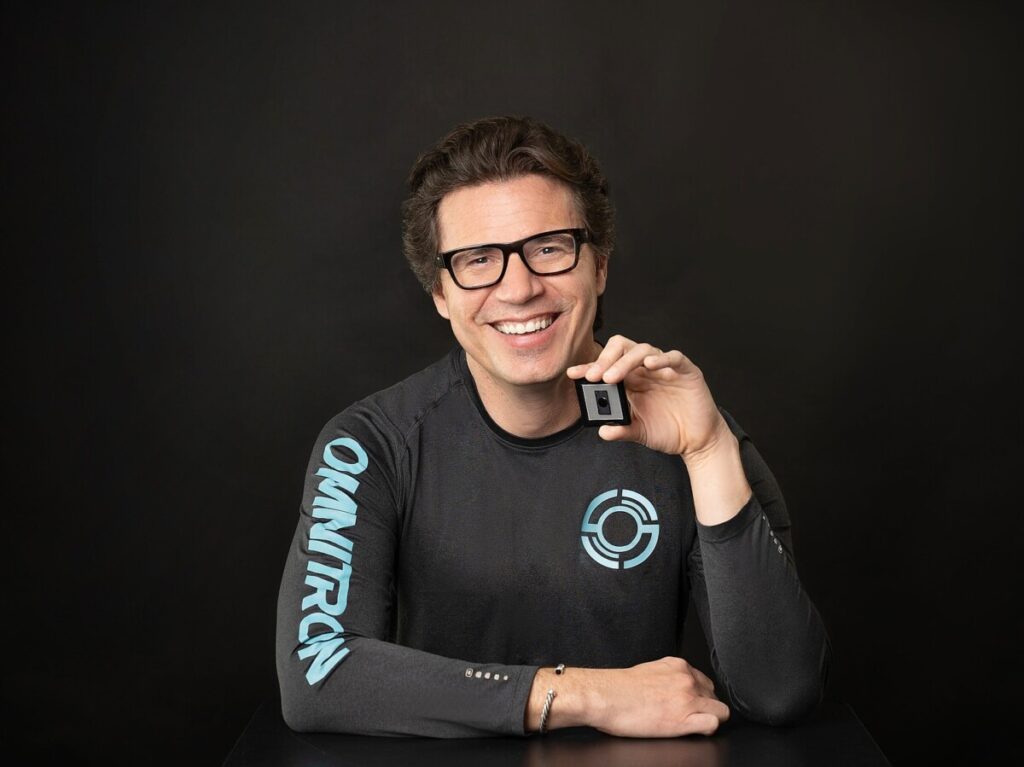This ex-Tesla engineer is bullish on lidar for robotaxis and humanoid robots
In the rapidly evolving landscape of robotics and autonomous vehicles, Eric Aguilar, cofounder and CEO of Omnitron Systems, is championing the integration of lidar technology as a crucial component for enhancing machine perception. Having previously worked as an engineer at Tesla on the Model 3 rollout, Aguilar left the company in 2018 to pursue his vision of making lidar more affordable and reliable. His belief is that as the demand for both humanoid and vehicular robots increases, so too will the necessity for advanced sensing technologies like lidar, which utilizes laser light to measure distances and detect objects. While Tesla CEO Elon Musk has dismissed lidar as a “fool’s errand,” Aguilar is betting on its potential, particularly as automakers increasingly explore driverless capabilities.
Aguilar’s insights stem from over two decades of experience in sensor technology, including his time at Google X and Argo AI. He recognizes the limitations of current lidar systems, which often include multiple moving parts that require frequent recalibration and can suffer from wear and tear, particularly when mounted on moving vehicles. To address these challenges, Omnitron is innovating with silicon-based lidar systems, which promise to be more durable and cost-effective. By leveraging semiconductor manufacturing processes, Aguilar aims to produce lidar units that could cost “hundreds of dollars” instead of the tens of thousands seen in earlier models. This shift could open the market for major automotive manufacturers like Mercedes and GM, making lidar an essential component of next-generation vehicles.
Aguilar emphasizes that lidar is not just beneficial for cars; it is also vital for humanoid robots, which require sophisticated sensors to navigate complex environments safely. For instance, companies like Agility Robotics are already utilizing lidar to enhance the spatial awareness of their robots, allowing them to better understand their surroundings and interact with objects and people. Aguilar asserts that the integration of lidar will be critical in ensuring the safety and reliability of robots, particularly in sensitive scenarios, such as when interacting with humans. As Aguilar notes, “the bar for integrating robots into the human experience — it’s going to be much higher.” His commitment to advancing lidar technology reflects a broader industry trend toward prioritizing safety and reliability in the development of autonomous systems.
Eric Aguilar, cofounder and CEO of Omnitron Systems, said lidar will be an important sensor for humanoid robots to see.
Courtesy Omnitron Systems
Eric Aguilar was a Tesla engineer working on the rollout of the company’s Model 3.
Aguilar left Tesla in 2018 and cofounded Omnitron Sensors a year later.
His goal is to make lidar more affordable and reliable.
Tesla CEO Elon Musk
believes lidar is a “fool’s errand.”
A former Tesla engineer, Eric Aguilar, cofounded an entire company to perfect it.
His bet: all robots — whether vehicular or humanoid — will need lidar to see.
Lidar is a sensor
that uses laser light to detect the distance of objects. Historically, the sensor has been used for mapping, but in recent years, it’s become an extra set of eyes for self-driving cars, including
Waymo’s robotaxis
.
Aguilar cofounded Omnitron Sensors in 2019 and serves as CEO. He has worked with sensors for over 20 years, at
Google X’s drone delivery project
, Tesla, and Argo AI, a robotaxi venture backed by Ford and Volkswagen, before it shut down in 2022.
When Musk moved to forgo lidar, Aguilar, an electrical engineer by training, understood some of the
Tesla CEO’s misgivings
about the sensor. They can be costly and not built as efficiently as they could be, Aguilar says.
With Omnitron, he aims to make lidar both more affordable and durable by utilizing silicon and the semiconductor manufacturing process to produce the components inside the sensor at scale.
“This is what will unlock the market,” he told Business Insider. “This is what will open up the market to get companies like Mercedes and GM to buy lidars and put them in their vehicles.”
The problem with lidar
As more
automakers explore driverless functions
, Aguilar believes lidar will be an essential part of tomorrow’s cars.
Lidar can be a little like a disco ball:
a laser is pointed at a mirror that is constantly moving on an electromagnetic motor, and the reflected light measures the distance of objects around whatever it’s mounted on, such as an autonomous vehicle.
To achieve a better range with a lidar, you need a larger laser and, consequently, a larger mirror. That makes lidars more expensive, and when placed in a moving vehicle, the sensor could require constant adjustment. Companies have to “recalibrate those sensors, redo alignment, or replace those sensors,” Aguilar said.
Aguilar said the problem with many lidar systems is how they’re built. There can be numerous moving parts inside the sensor, which require frequent calibration and are susceptible to wear and tear when placed on top of a frequently moving car, the cofounder said.
“When you talk to OEMs — Mercedes, Volvo, BMW, GM — they don’t want lidar to have to be replaced every two or three months,” he said. “And that’s what I was experiencing working at these companies: Every two to three months, something would break in this thing and we’d have to get them replaced.”
That’s where silicon comes in. With silicon, Aguilar said, you’re dealing with fewer and lighter moving parts that can last longer.
Silicon is much more durable, the Omnitron CEO argues, and could handle the kinds of temperature fluctuations an autonomous vehicle would experience. Then, by using a chip manufacturing process, the parts are built with nanometer-level precision and can be built at scale.
“So you get a wafer with hundreds and thousands of these devices instead of building one at a time,” Aguilar said.
Around the time Aguilar was at
Google’s moonshot factory
, a single lidar unit could cost $120,000. Today, a similar model could cost around 10 grand — a significant drop, in part thanks to better designs and increased manufacturing scale.
Aguilar says Omnitron’s process brings down those same lidar units to “the hundreds of dollars.”
Why self-driving cars and robots need it
In self-driving cars, Aguilar sees lidar as the key to covering rare edge cases on the roads.
Cameras are “terrible” in low-light situations, he said. The cofounder used shadows as an example.
“When a shadow is being cast, a car can get confused as to: Is that a real object or is that a shadow?” Aguilar said. That’s where lidar comes in.
The Omnitron cofounder also sees humanoid robots as a ripe market for sensors.
Companies like Agility Robotics use lidar to help their humanoid robots navigate their environments.
Much like humans rely on sensors beyond their eyes to determine the amount of force needed to pick up objects, Aguilar said robots will need lidar to understand the depth of their surroundings and the objects and people within them.
Aguilar’s case for lidar in cars or robots echoes what many
CEOs in the self-driving space
have already said on the sensors: It all comes down to safety.
“The bar for integrating (robots) into the human experience — it’s going to be much higher,” he said. “I’m not going to let this thing hold my baby, for example, if I don’t know that this thing is robust and this sensor is really, really important for that.”
Read the original article on
Business Insider
Eric
Eric is a seasoned journalist covering Business news.



